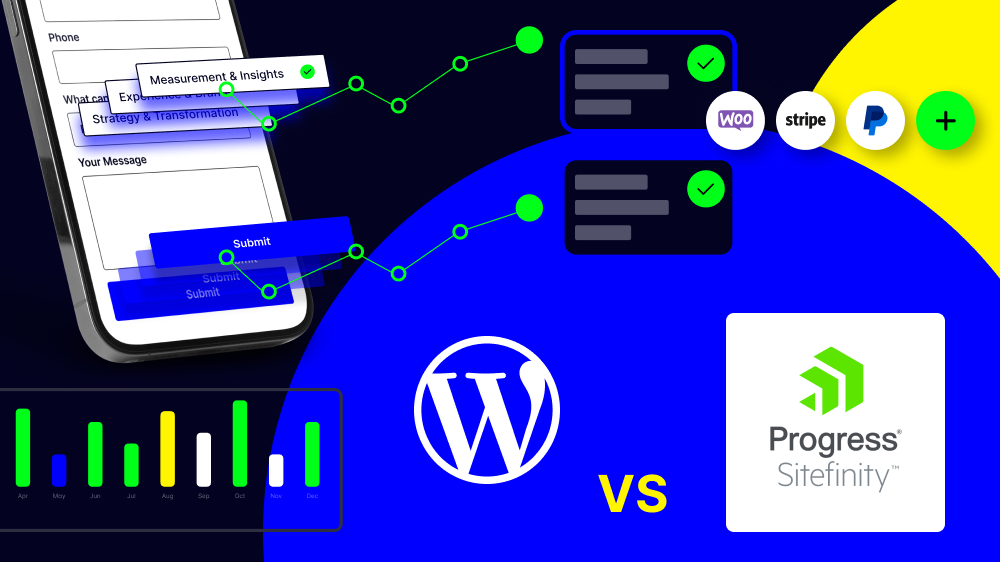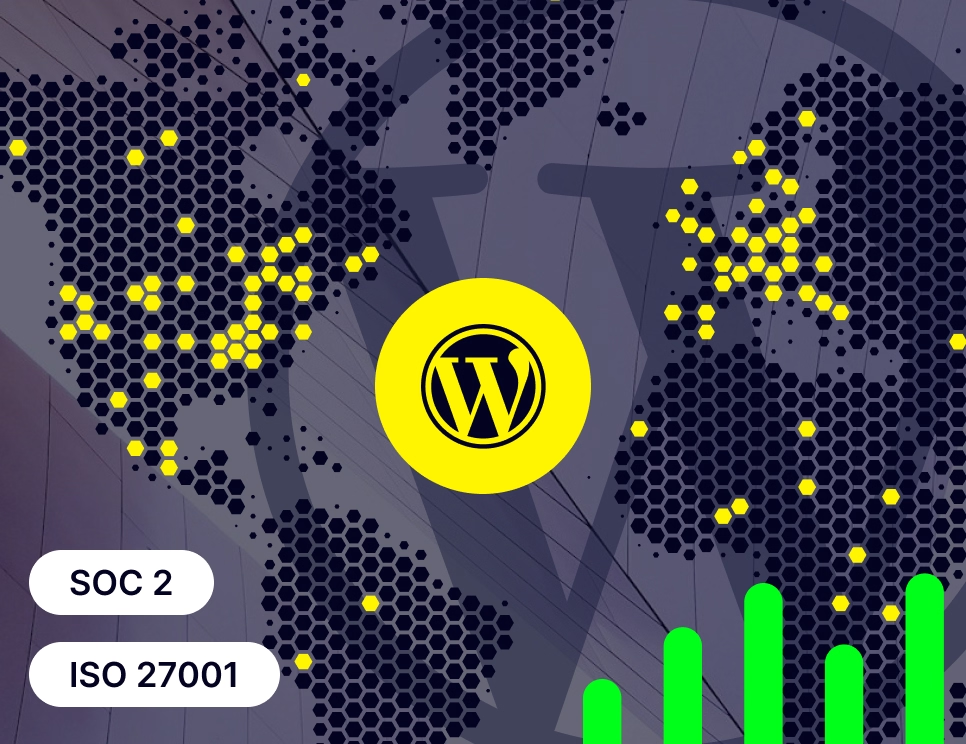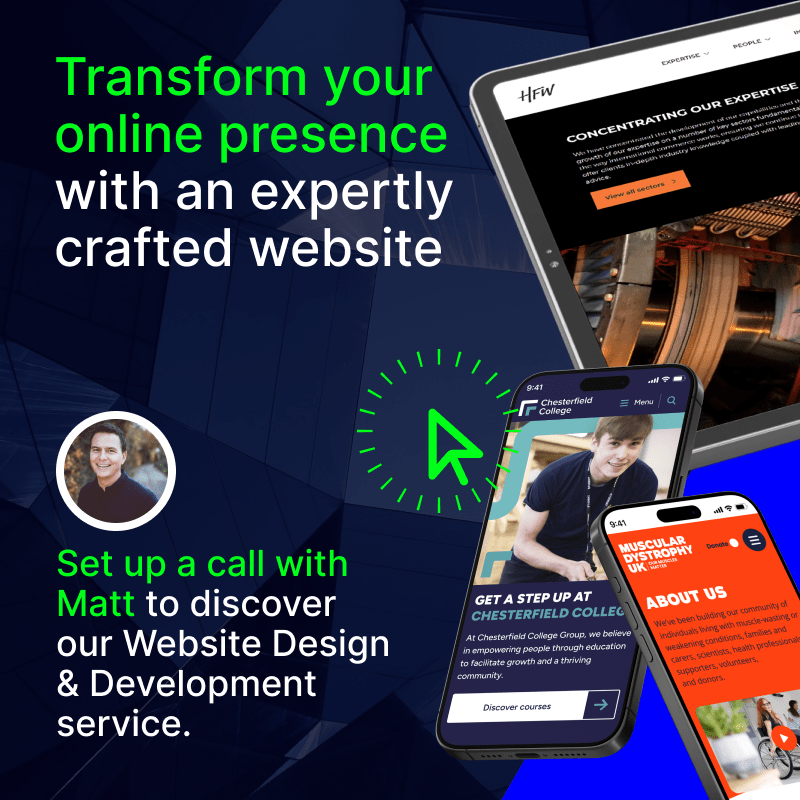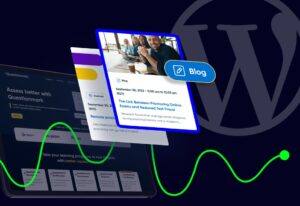Sitefinity to WordPress Migration Guide
Is your Sitefinity website slowing down your digital growth?
Considering the advanced digital needs of enterprise organisations, Sitefinity can be restrictive (both technically and financially).
For organisations looking to scale, WordPress offers a smarter alternative: an open-source CMS that gives you full control over your site’s design, integrations, and content workflows.
This guide outlines why the switch makes sense, and exactly how to do it.

Lee Hanbury-Pickett is a Senior Developer at Itineris, bringing over a decade of expertise to the team. Having been with the company for 10 years, Lee specialises in building and maintaining WordPress websites, combining technical precision with creative problem-solving. With extensive experience and a deep understanding of the industry, he plays a key role in delivering high-quality digital solutions that support clients’ goals and enhance user experiences.
Synopsis
- WordPress delivers greater flexibility, scalability, and cost-efficiency than Sitefinity. It gives you open-source freedom, no restrictive licensing, a vast developer ecosystem, and the ability to fully customise infrastructure, workflows, and integrations.
- Migration is an opportunity to enhance design, performance, and SEO — from rebuilding templates for better UX and accessibility, to preserving link integrity and metadata for improved search visibility.
- A structured migration process ensures success. This includes auditing content, planning architecture, setting up a secure development environment, migrating and QA’ing content, rebuilding integrations, implementing redirects, and testing thoroughly before launch.
Table of Contents
Why Migrate Your Website from Sitefinity to WordPress?
If you’re using Sitefinity and finding it restrictive, you’re not alone.
Many organisations, especially those managing large-scale content, are switching to WordPress for better flexibility, lower costs, and easier content workflows.
Here are some of the main reasons to switch from Sitefinity to WordPress.
Sitefinity vs WordPress: Discover which CMS is best in this side-by-side comparison →WordPress Offers More Control and Flexibility
Sitefinity is a proprietary CMS. That means your development options, hosting setup, and integrations are all shaped by Progress’s roadmap.
WordPress, on the other hand, is open-source. You have full control over your infrastructure, front end, backend, and workflows. You can build exactly what you need, without being boxed into a licensing model or specific tech stack.
This is especially useful for enterprises running complex sites or multi-region setups. You can use WordPress as a headless CMS, integrate it with external systems, and customise content workflows without relying on a vendor to release new features.
Quite simply, WordPress should never hold back your site with limitations.
It’s More Cost-Effective Over Time
Sitefinity’s licensing fees increase quickly as your needs grow. You’ll pay extra for multisite features, user seats, marketing tools, and add-ons.
WordPress doesn’t have these hidden costs. There are no annual CMS licence fees, and you choose the level of support, hosting, and security that fits your needs. Multisite is also a standard feature.
When you build on WordPress, your budget goes further. You can invest more in UX, performance, SEO, or content operations instead of paying for access to the platform itself.
Plus, being the world’s most widely used CMS, WordPress has an enormous base of skilled developers available. This makes accessing custom developer work more affordable over the long run.
Easier for Content Teams to Manage
Content workflows in Sitefinity often rely on developers to manage. Publishing a simple update can feel slow or clunky, especially for marketing teams.
With WordPress, the editorial experience is far cleaner and faster.
Tools like the Gutenberg editor, reusable blocks, and custom publishing workflows make it easier to scale content across pages, products, or regions. Training new team members is quick, and updates don’t need developer time.
In fact, chances are your teams already have experience working in WordPress dashboards.
Built for SEO and Performance
Search performance on Sitefinity sites can lag if your technical setup isn’t perfect.
WordPress makes it easier to follow SEO best practices. You can control metadata, structure content around user needs, and improve load times through plugins, CDN integrations, or static site options.
This level of optimisation is key for enterprise sites with thousands of pages or international audiences. You’re no longer limited by how the CMS handles routing, indexing, or caching. With WordPress, you have more control over optimisations.
Supported by a Huge Global Ecosystem
WordPress powers over 40% of the web. That means you benefit from an enormous, active community of developers, security experts, plugin authors, and agencies.
There’s also less risk of vendor lock-in. If your needs change or you want to switch support partners, you have options.
For enterprise teams, this ecosystem adds long-term security. You’re not dependent on one company’s roadmap. You’re building on a platform with proven scalability, a wide talent pool, and constant innovation.
This provides more room to regain control, scale content more efficiently, and build a platform that doesn’t hold your team back.

Sitefinity to WordPress Migration: Step by Step
Migrating your CMS can be a major undertaking. However, it’s also an opportunity to completely enhance your digital presence and website performance.
If Sitefinity is holding your website back, here are the general steps to follow for a smooth migration to WordPress.
Audit Your Existing Sitefinity Website
Before migrating your CMS, start with a full content and technical audit.
List all pages, templates, modules, media files, redirects, and third-party integrations. Essentially, you need to take stock of the content that you will be migrating.
Identify what to keep, improve, or remove. Check content types, custom fields, and how data is structured in Sitefinity. This gives you a clear view of the scope and helps shape the WordPress build.
This is also a good time to plan which content can be audited and improved. After all, migrating your CMS provides the ideal moment to enhance and redesign an outdated website.
Plan Your WordPress Architecture
When you know what you will be moving, the next step is to establish how the new site will be structured in WordPress.
Use the audit to define your new WordPress structure. Map Sitefinity content types to WordPress equivalents, such as posts, pages, or custom post types.
Plan taxonomies, navigation, URL structure, and user roles. This step prevents confusion later and ensures your CMS is built around your users and workflows.
Set Up a WordPress Development Environment
At this stage the bulk of the planning is behind you, so it’s time to establish a WordPress foundation.
First, this involves choosing and setting up your WordPress hosting provider. If you’re going enterprise, consider WordPress VIP or a headless architecture.
Once hosting is established, it’s time to build a staging site.
Install a clean WordPress instance and configure base settings, security controls, and development tools. This gives you a safe space to build and test the new site before going live.
Rebuild Templates and Design System
Even if you want a duplicated site on a new CMS, do not try to replicate Sitefinity templates exactly. Rather, use the migration as a chance to improve design, accessibility, performance, and UX.
Rebuild templates using WordPress’s block editor or a theme framework that suits your needs. Ensure all layouts are mobile-friendly, SEO-optimised, and easy to update.
While WordPress does make web design convenient through an enormous library of themes and plugins, you can also customise your site to your exact needs with custom development. This combination of accessible tools combined with absolute flexibility is a major advantage of using WordPress.
Migrate Your Content
At this stage, your new WordPress foundation should be set up. Now it’s time to move all of your website content over to its new home.
Export content from Sitefinity using its API or database tools. Map each content type and field to the correct WordPress format.
Use scripts or migration plugins to automate where possible, but be ready for manual QA. Not everything will migrate seamlessly, which is why the content audit created at the beginning of this process is so important.
Migrate all of your pages, posts, images, documents, and media libraries. Maintain internal links and metadata when doing this.
Then, double check your list of planned content to migrate and your list of migrated content. Ensure it all aligns and that everything you need in your new WordPress home is there.
Of course, just because content has been moved from one CMS to the other, doesn’t mean it will look or perform seamlessly in its new home. You will need to manually go through all of the content to check design and UX elements. Ensure that everything is there and working.
This is a major process that requires rigorous testing. Working with an enterprise web design agency should be a priority for any website migration.
Rebuild Integrations
Once everything is housed in WordPress, you can recreate third-party integrations in the CMS. This may include CRMs, marketing platforms, single sign-on, forms, or analytics.
The good news is that WordPress supports an enormous number of integrations, so chances are any third-party software you use will work seamlessly with the platform.
Use WordPress plugins where available, or create custom integrations where needed. Test everything to make sure it works with the new CMS logic.
Redirect URLs and Preserve SEO
One of the most important parts of an effective migration is maintaining your link integrity and structure. This means you’ll need to ensure each and every link works on your new platform.
Match any old Sitefinity URLs to their new WordPress locations. Create 301 redirects to maintain search engine rankings and avoid broken links.
Carry over meta titles, descriptions, schema markup, and tracking scripts. Check crawlability and indexability once the site is migrated.
These factors are essential to SEO. Get them right, and you should see an uptick in SEO performance with your new website. However, any issues in these areas could result in an SEO drop.
Test, Optimise, and Launch
Test every feature, form, and content type. Fix bugs, optimise performance, and check mobile behaviour. Validate accessibility and run SEO audits.
Once this is all approved, you can schedule the live launch. Sync any last-minute content changes and switch DNS when ready.
While your new website may be active, there’s every chance that issues exist hidden out of sight. Even the most well-planned migrations often reveal issues later down the line. This is why you need to monitor closely after launch and resolve any issues quickly.
Perform regular site checks on Search Console, and monitor search and engagement performance.

Considering a WordPress Migration?
Migrating from Sitefinity to WordPress isn’t just a technical upgrade, but a chance to modernise your digital platform for greater flexibility, performance, and scalability. With the right planning, your organisation can unlock faster content workflows, improved SEO, and lower operational costs.
From rebuilding templates to integrating key systems and preserving SEO equity, every step matters. Done right, the result is a scalable platform that empowers both your marketing and development teams.
If Sitefinity is limiting what your organisation can achieve online, now’s the time to make the move.
Ready to migrate? Get in touch. Our experts can guide you every step of the way.
Sitefinity to WordPress Migration: FAQs
Yes, you can transfer your existing website from Sitefinity to WordPress. The process involves exporting your content, mapping it to WordPress formats, and setting up redirects to maintain SEO and user experience.
WordPress is easier to use, more flexible, and has a larger plugin ecosystem than Sitefinity. It allows non-technical users to manage content efficiently while still supporting complex functionality. It’s open-source nature offers far greater opportunities, as well as a significantly lower cost of ownership.
WordPress VIP offers enterprise-grade performance, security, and scalability. It’s ideal for high-traffic websites needing advanced workflows, robust hosting, and expert support.
Migrating a website can cause SEO issues if you’re not careful. However, it can also result in a significant SEO boost if you manage the migration properly. You need to implement 301 redirects, preserve metadata, maintain internal links, and submit a new XML sitemap. This ensures search engines and users can find your content without disruption.
Risks include broken links, lost SEO rankings, mismatched content formatting, and downtime. Careful planning and technical execution can minimise these issues.



